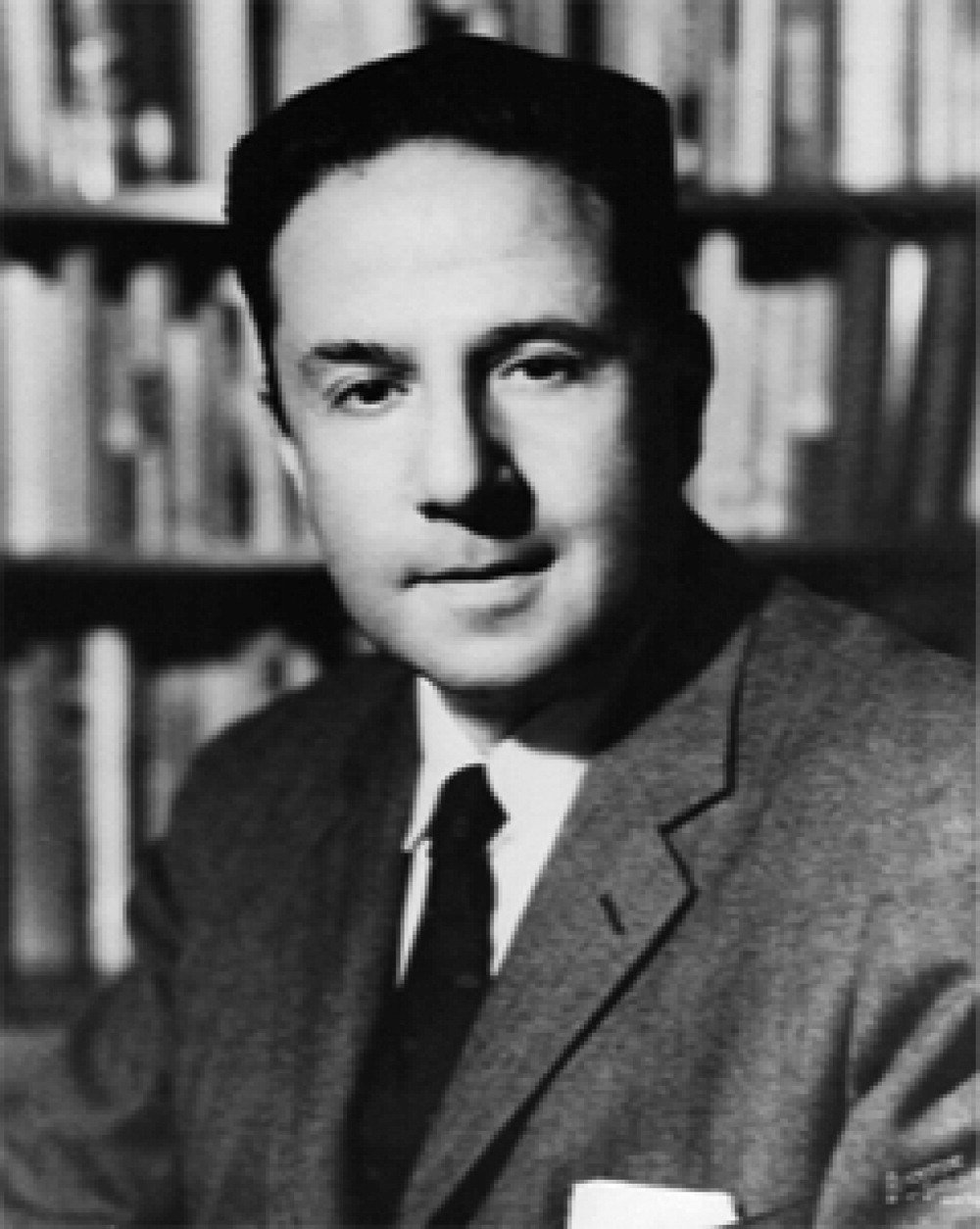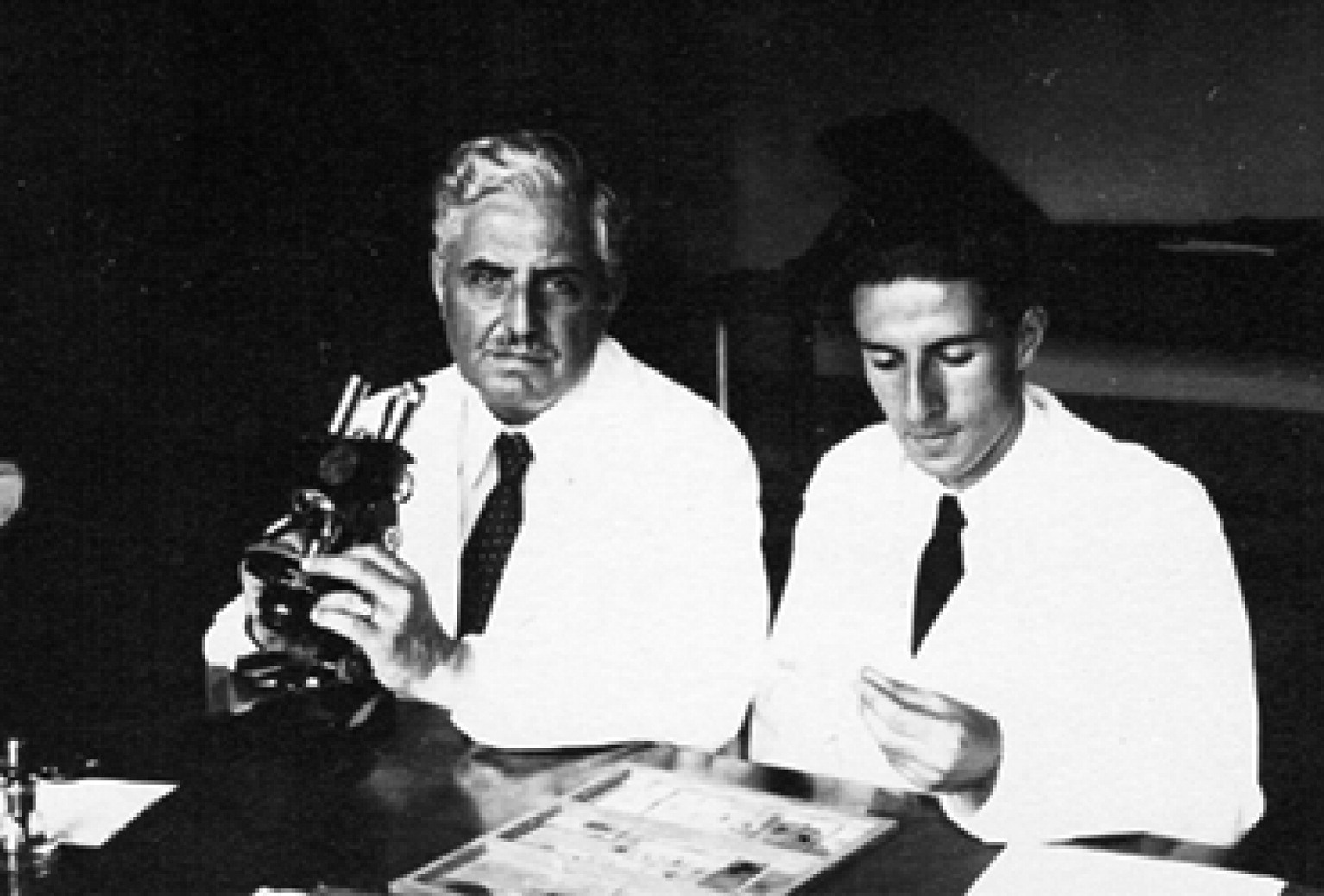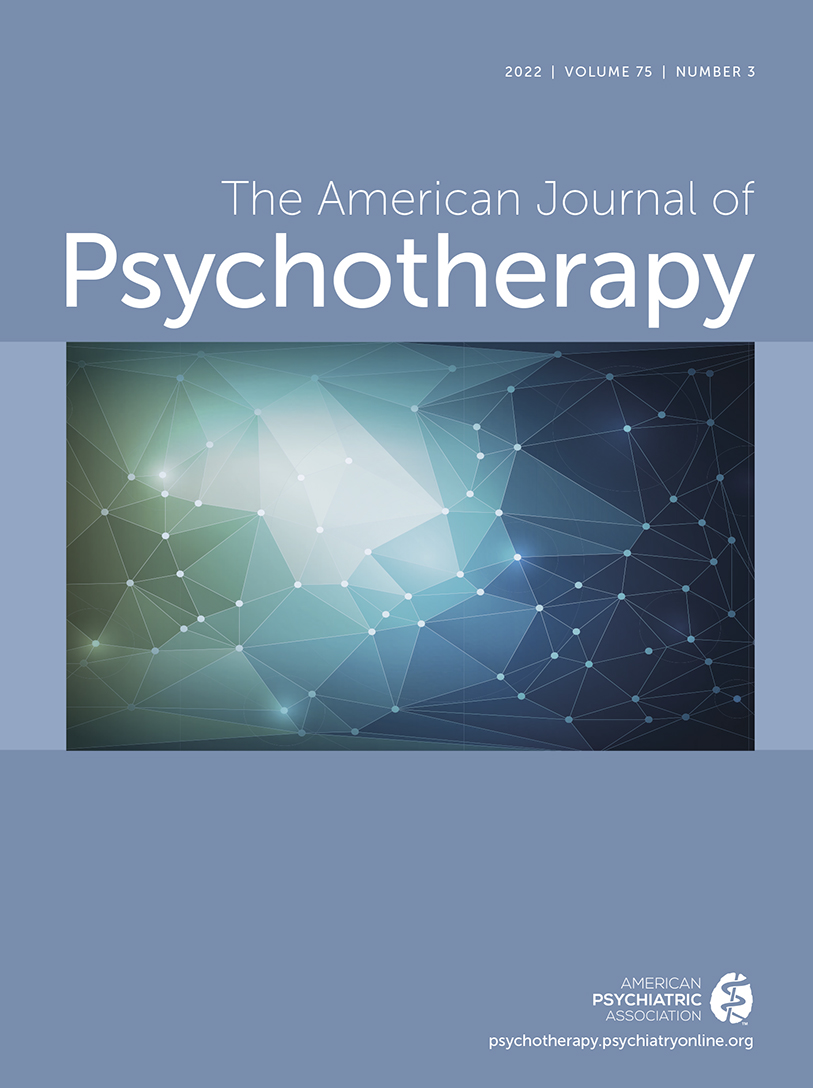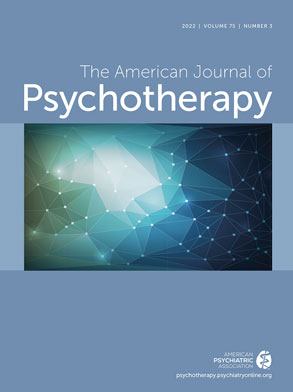An opinion poll taken in the mid-1960s revealed that the most famous psychiatrist in the United States at that time was Silvano Arieti (
1) (
Figure 1). His edited 1959
American Handbook of Psychiatry remained the standard textbook in the field for more than a decade, and the second edition of his widely acclaimed book
Interpretation of Schizophrenia was awarded the U.S. National Book Award in the Science category. Yet, Arieti’s work is unknown to many contemporary psychiatrists and mental health professionals. Last year marked the 40th anniversary of Arieti’s death and thus an opportunity to re-examine his contributions to psychiatry, which include a comprehensive psychodynamic and biopsychosocial theory of schizophrenia and his support for a pluralistic model of mental disorder at a time when the field was intensely divided between the biological and psychoanalytic paradigms. This article offers a broad overview of Arieti’s work and contributions to modern psychiatric theory.
Arieti’s early life
Born in Pisa, Italy, in 1914 to an Italian Jewish family, Arieti had broad interests in science, literature, and philosophy before he decided on a career in medicine. He received his medical degree in 1938 from the University of Pisa, where he undertook training in neuropathology. On November 11, 1938, Arieti’s family saw Mussolini’s regime pass the first of its infamous
leggi razziali—the fascist “racial laws” that began by restricting the civil rights of Jews, banning their books, and excluding Jews from public office and higher education. Exactly 2 months later, on “that cold night of January 11, 1939”—as Arieti would later recount (
2)—“I kissed my father and mother goodbye and escaped Mussolini’s hordes.”
Arieti arrived in New York fluent in a number of languages but knowing “not a word of English” (
2). A letter from his thesis director and mentor, Giuseppe Ayala (
Figure 2), chief of Pisa’s Institute of Psychiatry and Neurology, opened doors for Arieti in finding a position at the New York State Psychiatric Institute, followed by 5 years of residency training in psychiatry at Pilgrim State Hospital on Long Island. With nearly 14,000 patients at its peak, Pilgrim State was the largest hospital of any kind in the world. For nearly four decades, Arieti worked intensively with persons experiencing schizophrenia in all its forms and stages. When Arieti died in 1981, at only 67 years old, he was widely considered one of the field’s foremost authorities on schizophrenia.
Schizophrenia from a psychological perspective
Unlike most psychiatrists of his generation, who became more interested in the use of phenothiazines and biological remedies for schizophrenia than in talking therapies, Arieti retained his interest in using the psychotherapeutic method for patients with schizophrenia throughout his career. His interest in this area grew during his residency at Pilgrim State from 1941 to 1946, when he realized that the most hopeless patients, held in the hospital’s “back ward,” improved significantly in response to the development of an attachment with a nurse or caregiver (
3). Some of these patients became well enough to be discharged. Recalling this experience, Arieti wrote:
I was impressed by the fact that even an advanced schizophrenic process had proved to be reversible or capable of being favorably influenced by a human contact. These were quite unusual notions at the time. I thought that perhaps methods could be devised by which I could help the patient maintain, increase, strengthen the achieved amelioration, even outside of the hospital environment. But, of course, I had no idea of how to do it. I had nevertheless learned that whatever benefit the patient could receive, had to come from his bonds with at least another human being (
3).
For the next four decades, Arieti devoted himself to the psychological study of the problem of schizophrenia, culminating in the 1974 expansion of his seminal book,
Interpretation of Schizophrenia (
4)
.Despite his emphasis on the psychological factors involved in schizophrenia, Arieti endorsed research into the biological and genetic aspects of the illness, devoting four chapters to biology in his
Interpretation of Schizophrenia (
4), including “The Biochemistry of Schizophrenia” and “The Central Nervous System in Schizophrenia.” As Pies (
5) noted, Arieti’s writing is an early example of a biopsychosocial approach to mental disorder, a subject on which I based my 2019 work (
6), incorporating Arieti’s perspective. In summarizing his views on the matter, Arieti (
3) wrote:
I believe that, whenever possible, an attempt should be made to integrate the biological with the psychological. . . . Although I am convinced that every function (or dysfunction) of the brain is mediated by a biochemical change, I have always found myself drawn more toward inquiries into the psychological factors which bring about suffering or dysfunction, or are powerful enough to change what is only a biological predisposition into a clinical actualization.
Psychodynamics of the early environment
Arieti believed that the early environment of the patient with schizophrenia was almost always saturated with anxiety, and that the child who would go on to develop schizophrenia was often raised in an environment that was “not able to offer him a modicum of security or basic trust” (
6). Later in his career, Arieti challenged the prevailing psychoanalytic belief that the mother’s personality and attitude were the most important psychogenic factors, insisting that intrapsychic processes—those occurring within the patient—lead to a “transformation of the parental image,” in which the mother (or father) is seen as being much worse than she is seen by others.
On this subject, Arieti wrote, “the patient who responds mainly to the negative parts of his mother will try to make a whole out of these negative parts, and the resulting whole will be a monstrous transformation of the mother” (
7). Stressing these intrapsychic agencies, Arieti maintained that the patient is not a tabula rasa, or a sponge that soaks up whatever is given to him or her, but that the patient adds “an element of his own individuality and creativity to what he receives and thus [contributes] to his own [psychotic] transformation” (
7).
Thus, Arieti must be distinguished from the other psychoanalytic theorists of his day, such as Theodore Lidz and Gregory Bateson, who placed significant blame on the family, and in particular on the mother, for the patient’s schizophrenia. By contrast, Arieti contended that both environmental and intrapsychic factors—as well as biological and genetic ones—contributed to the development of this major psychosis.
Prepsychotic period and psychotic regression
Arieti traced the psychodynamic development of schizophrenia from birth through four stages (
4). In the first period, occurring in early childhood, the future patient has a difficult time accepting the “Thou,” the other person, who is needed to form the patient’s “I” or self. The Thou is perceived as the “malevolent Thou” and the I as “bad me.” During the second period (later childhood), the “Thou” is transformed into a “distressing other” and the bad me into a “weak, inadequate me.” Arieti wrote (
7) that, during this period, the child comes to “see himself as a weakling in a world of strong and distressing adults.”
Arieti described the third period as starting roughly at puberty and being characterized by the child’s inability to sustain self-esteem and a sense of personal significance on entering the larger social world. Arieti wrote:
[The patient] does not feel prepared for what he experiences as perennial challenge. . . . The patient comes to believe that the future has no hope, the promise of life will not be fulfilled. He feels unaccepted and unacceptable, unfit, alone (
7).
At this point, the patient has only one solution, one defense, that remains: “to dissolve or alter his cognitive functions [and] the thought processes that have brought about conceptual disaster” (
7). The break with reality occurs; this represents Arieti’s fourth period.
Four stages of schizophrenia
In addition to the four periods of the psychodynamic development of schizophrenia, Arieti described (
4,
7) four stages of the illness itself: the initial, advanced, preterminal, and terminal stages. During the initial stage, anxiety is heightened and a sense of equilibrium is lacking. In this stage, the patient progresses through three phases, including panic (“strange things are happening”), psychotic insight (in which the patient succeeds at “putting things together” and “making sense” of a new reality), and multiplication of symptoms (in which symptoms become more and more intense and frequent).
In the second, or advanced, stage, the patient has come, more or less, to accept the illness. The psychotic symptoms remain, but they do not seem to bother the patient as much as before. Life has become increasingly restricted and lacks spontaneity. The patient’s behavior becomes routine and stereotypical.
In the next stage, the preterminal stage, the patient’s symptoms have burned out, and the different types of schizophrenia (e.g., paranoid, hebephrenic, catatonic) come to closely resemble each other. Primitive and odd behaviors prevail. In the natural, untreated course of the disorder, this stage typically occurs 5–15 years after the initial episode.
During the fourth or terminal stage, the patient’s behavior becomes even more primitive and reflex-like. He may grab for food and, later, ingest inedible objects. Perceptual alterations may appear, such as insensitivity to pain, temperature, or taste.
Because of advances in the pharmacologic treatment of schizophrenia, patients in the latter stages of the disease appear to be less commonly encountered in modern clinical settings. Although these preterminal and terminal cases filled the back wards of state hospitals decades ago, most patients who present for treatment today are in the first (or, less commonly, second) stage of schizophrenia. Arieti contended that whereas psychotherapy might be helpful for patients in the first two stages of the disease, it does not offer any such relief for patients in the latter two stages.
Concretization and metaphor in schizophrenia
Arieti maintained that the symptoms of schizophrenia reflect a psychological process known as “concretization,” wherein abstract beliefs are transformed into definite, concrete representations or forms. Thus, hallucinations and delusions, for instance, are not random, meaningless phenomena but rather understandable and interpretable communications. Nevertheless, Arieti stressed that these concretizations become very real to patients in their perceptions of the world.
Describing this process, Arieti wrote:
If a patient makes the statement that he smells a bad odor emanating from his body, his language is metaphoric and symbolic for us, because we interpret, rightly so, that the patient feels that he is a rotten person, that he stinks in a metaphoric sense (
8).
Arieti continued:
The fact, however, is that the patient has an olfactory hallucination and he really smells a bad odor. What appears to us as a metaphoric expression is only a regressive phenomenon based on a concretization of perceptualization of an anxiety-laden concept about himself (
8).
Arieti interpreted paranoid delusions similarly:
In the paranoid type of schizophrenia, the patient projects to the external world the evaluation of self that he had previously accepted. No longer will he accuse himself. The accusation now comes from the external world (
7).
Arieti called catatonia a “disorder of will,” observing that the afflicted patient was “tortured by the potential destructiveness of responsibility, [and] the passivity of the catatonic is a relief from such responsibility” (
9).
Psychotherapy for schizophrenia
In the second edition of
Interpretation of Schizophrenia, Arieti illustrated, in great detail, his psychotherapeutic technique in working with patients with schizophrenia. The technique aims, in part, at
reestablishing the bond of human relatedness with the patient, attacking psychotic symptoms with specific techniques, understanding the psychodynamic history, especially the misinterpreted relations with the family, and helping the patient to unfold toward new, nonpsychotic patterns of living (
7).
In the early stages of treatment, the establishment of “basic trust” is of paramount importance; the patient must come to feel that, despite his unusual experiences, he is no longer alone in the world. Of equal importance is the therapist’s warmth, closeness, and support. Interpretation is not very important in the acute phases of the illness, but it can be helpful in the latter stages of treatment, for instance, teaching the patient how he concretizes his feelings and ideas. Arieti described his approach as being “as nourishing as it is interpretive” (
7). As treatment proceeds, the therapist, who initially assumes a parental role, “gradually becomes a peer of the patient” (
7), promoting the patient’s autonomy, individuality, and self-assertion.
A significant contribution of Arieti was his description of the “listening attitude,” which he defined as a momentary state of expectation immediately preceding the experience of auditory or visual hallucination. Arieti contended that if patients could learn to recognize this heightened anticipatory state, then hallucinations could be curtailed or at least greatly reduced. More recent neuroscience research supports Arieti’s formulation (
10), and my own clinical experience confirms that many patients with schizophrenia report improvement in auditory hallucinations when made aware of the listening attitude.
Biopsychosocial approach
Perhaps Arieti’s greatest and most enduring contribution to modern psychiatry was his defense of a pluralistic approach to mental disorder. Throughout his writings, he carefully balanced his psychodynamic viewpoints with findings from the biological literature, insisting that the two models could, and should, live in harmony. Unlike many psychoanalysts of his era, who, at least initially, were quite skeptical of the new medications, Arieti believed that medications had a proper place in the treatment of schizophrenia and could, when appropriately prescribed, aid in the psychotherapy process and help patients who were otherwise inaccessible to psychotherapy.
In summarizing his views on the need for biopsychosocial psychiatry, Arieti wrote:
[Psychiatric] theoreticians should be open to all vistas and should work toward constructing bridges between equally plausible orientations. No reductionism of any kind but a pluralistic approach must prevail in psychiatry. Those of us who are more humanistically oriented may even conclude that there is no sharp demarcation between the study of psychiatric illness and the concern with the meaning of life (
11).
I contend that Arieti’s formulation of schizophrenia laid the groundwork for psychiatry’s later adoption of Engel’s biopsychosocial model (
12), and that Arieti’s writings continue to provide insight into the practical application of a unified biological and psychodynamic approach. In sum, Arieti saw the biological and the psychological as complementary, not antagonistic, paradigms, each describing human mental phenomena at a different level of analysis. It is in this spirit that psychiatry continues to explore the complex relationship between brain and mind.
Legacy and modern findings
It is an unfortunate reality that most modern psychiatrists and psychotherapists do not take an interest in psychotherapy for schizophrenia, although mounting evidence indicates its effectiveness as a component of schizophrenia treatment (
13). Many of Arieti’s core ideas have withstood the test of time, such as his ideas on the listening attitude and a pluralistic model, as described above. An influential article (
14) in the psychopharmacological literature cites Arieti’s work on the etiology of hallucinations. Other recent research has supported Arieti’s beliefs regarding the importance of early attachment in the later development of psychotic disorder (
15,
16), the meaning of psychotic symptoms and their relationship to trauma (
17,
18), and the relationship between biology and psychology in individual susceptibility to schizophrenia (
19).
It is important to note that Arieti was writing at a time when most psychoanalytic psychiatrists believed firmly in the theory of the schizophrenogenic mother, and his comments on this subject must be considered within this context. His later writings on the family of the patient with schizophrenia (
20) reflect an attempt to correct for this harmful notion, although he continued to recognize the importance of the early environment in the etiology of schizophrenia, a belief that, as noted above, has been supported by much of the contemporary research.
Arieti’s work foreshadowed much of the recent advances in the biopsychosocial understanding of schizophrenia and, remarkably, has been cited by modern biological psychiatrists as well as those working primarily from a psychological or trauma-based perspective. In this sense, his work continues to bridge the gap and unify psychiatry in its understanding of the most complex human problems.
Conclusions
Regrettably, most modern psychiatrists and mental health professionals have had little-to-no exposure to Arieti’s life’s work. Perhaps this lack is attributable to the belief, common in recent decades, that schizophrenia is a disease of the brain and that its symptoms possess no meaning or particular significance. However, as the pendulum swings back toward a more biopsychosocial model of psychiatry, students of the field would be wise to revisit the work of this pioneer of schizophrenia research. Forty years after his death, Arieti is remembered for his careful intellectual rigor, his genuine warmth and compassion toward patients and colleagues, and his devotion to our society’s sickest and most vulnerable.



